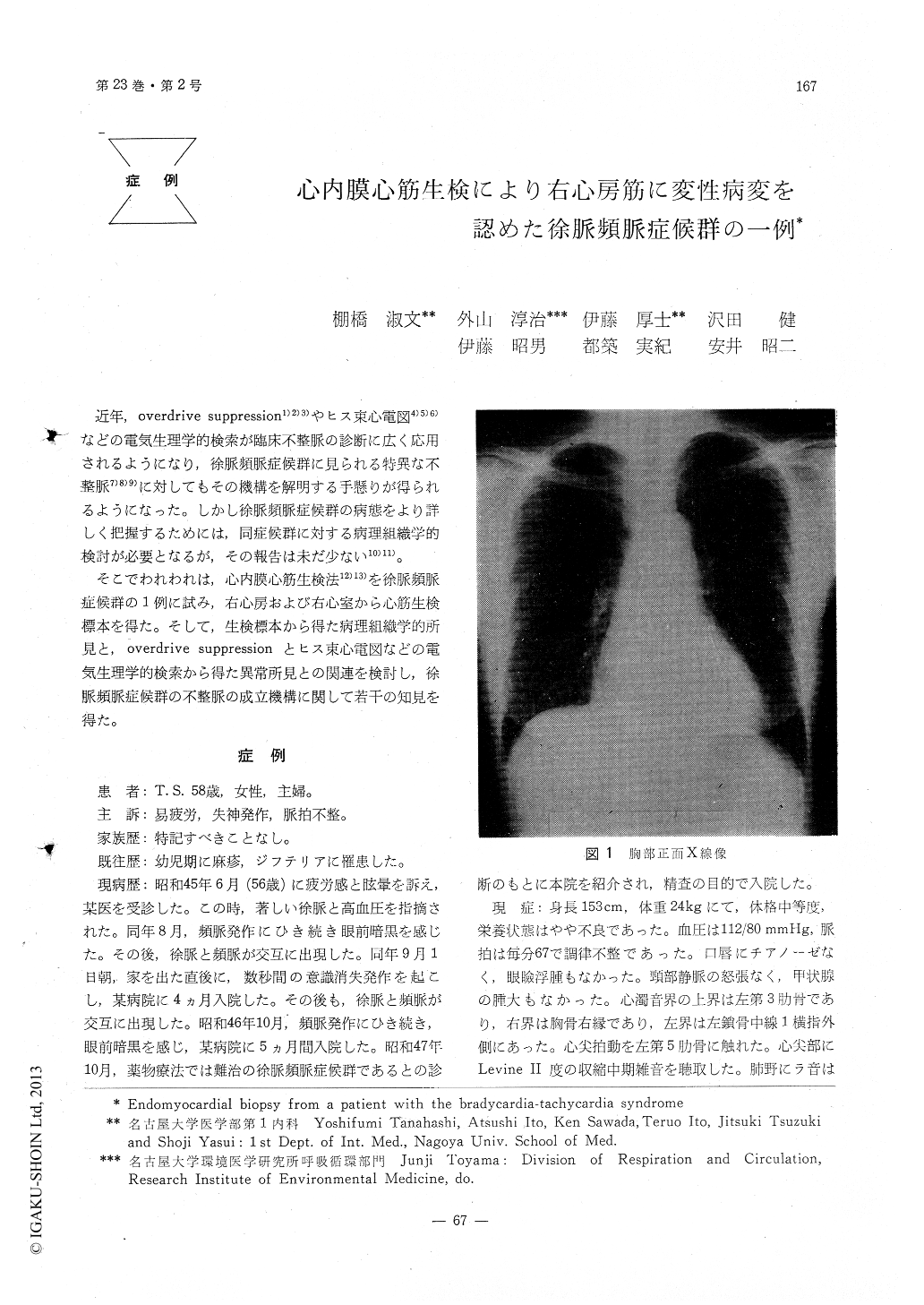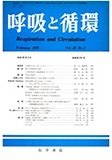Japanese
English
- 有料閲覧
- Abstract 文献概要
- 1ページ目 Look Inside
近年,overdrive suppression1)2)3)やヒス束心電図4)5)6)などの電気生理学的検索が臨床不整脈の診断に広く応用されるようになり,徐脈頻脈症候群に見られる特異な不整脈7)8)9)に対してもその機構を解明する手懸りが得られるようになった。しかし徐脈頻脈症候群の病態をより詳しく把握するためには,同症候群に対する病理組織学的検討が必要となるが,その報告は未だ少ない10)11)。
そこでわれわれは,心内膜心筋生検法12)13)を徐脈頻脈症候群の1例に試み,右心房および右心室から心筋生検標本を得た。そして,生検標本から得た病理組織学的所見と,overdrive suppressionとヒス束心電図などの電気生理学的検索から得た異常所見との関連を検討し,徐脈頻脈症候群の不整脈の成立機構に関して若干の知見を得た。
A 58-year old woman was admitted to the Nagoya University Hospital on October 24, 1972 because of recurrent syncopes. For the preceding 2 years she had been suffering from alternating bradycardia and tachycardia, and experienced attacks of severe dizziness and syncope. She had been admitted twice to a local community hospital because of syncopal attacks. Then, she was diagnosed as the bradycardia-tachycardia syndrome refractory to any drug therapy, and was refered to the hospital.

Copyright © 1975, Igaku-Shoin Ltd. All rights reserved.


